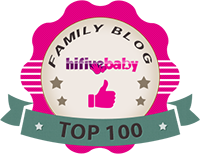- Study Says Most Parents Don’t Use Car Seats In Ride Share Vehicles Like Uber
- This 12-Year-Old Boy Is A Sophomore Aerospace Engineering Major!
- Fire Safety Experts Warn Of Hand Sanitizer Danger After A Mom and Kids Escape House Fire
- Recall Alert: Peaches May Be The Cause Of Salmonella Outbreak, 68 People Ill
- Summer Vacation In The Days Of COVID: Tips To Stay Safe
- How To Safely Grocery Shop During The Coronavirus Pandemic
- Michigan Teen With Vape-Related Illness Undergoes Double Lung Transplant
- Teen Kicks Off Anti-Vaping Campaign From Hospital Bed
- Teenager Receives Life Sentence For Strangling Sister To Death Over A Wi-Fi Password
- Toddler Falls To Death From 11th Deck of Cruise Ship
This Mom Has An Important Warning About Baby Slings After Death Of Her Baby


Marianne Matthews took a short walk to the store in the hopes that it would help her newborn calm down. She didn’t know just how dangerous 10 minutes in his baby carrier would be.
According to Kidspot, Marianne bought a fabric baby sling thinking that holding her infant against her chest was the safest place for him to be.
On Christmas Eve 2013, her 4-week-old son Eric was fussy, so the first-time mom decided to take him for a walk to the store.
Stretchy, hands-free baby slings were becoming popular during that time. The baby carrier Marianne had, wraps around the parent’s chest and waist, cradling the baby close to the body.
The sling was bought online, however, it came with very little instructions or safety information.
So with her baby secure in his sling, Marianne walked toward a nearby store. On the way, she had tried to soothe him by feeding him. She wrote for the Royal Society for the Prevention of Accidents (RoSPA):
“He started to get a bit hungry and I tried to breastfeed him whilst carrying him. I then decided to go home. At the time I thought Eric was just falling asleep.”
The two were only out for about 10 minutes, but when she returned home, Marianne noticed that her son’s nose was bleeding. That’s when she realized that Eric wasn’t quiet because he was asleep – he had stopped breathing.
The Mother had no idea that while she was walking with him, her son was actually suffocating:
“Everything happened so quickly and quietly I didn’t realize that something was very wrong. He had either choked or got into difficulties. By the time I got back, he had stopped breathing.”
The parents rushed their son to the hospital, but it was already too late. He never regained consciousness and died in his mother’s arms.
The coroner who investigated Eric’s death concluded that the sling was to blame, according to the Guardian.
The coroner’s report said that Eric died of cardiac arrest after being suffocated in his sling. It added:
“There is nothing to suggest that the use of the sling was inappropriate or incorrect.”
Marianne noted that none of the advice given to her as a new mom warned that the position of a newborn in a sling could lead to suffocation. She wrote:
“As a new parent, you get marketed at relentlessly with baby products. […] The dangers of slings were not mentioned in the antenatal classes we attended, or in any of the baby books we read.”
The Consumer Product Safety Commission (CPSC) issued a warning regarding use of baby slings in 2010, following multiple sling-related deaths. The CPSC reports that there were 17 fatalities and 142 non-fatal incidents regarding baby slings between January 2003 and September 2016.
Slings may be especially hazardous to infants under 4 months old, before their neck muscles are developed enough to control their heads. The fabric of the sling can hold the baby in a position that can block breathing and cause suffocation in as little as one to two minutes.
The CPSC states that holding an infant with the chin bent toward the chest can make it impossible for the baby to breathe:
“The baby will not be able to cry for help and can slowly suffocate.”
Parents should be vigilant to ensure they can see the baby’s face at all times and that nothing is blocking the infant’s face or mouth.
After losing her son, Marianne is concerned for mothers who may try to use a “breastfeeding sling.” She warns against using slings for younger babies and says that it’s too easy to miss the signs of a child in distress. She wrote:
“A baby trying to feed may make similar sounds to a baby struggling for breath, or make no sounds at all, and tragedy can occur in a minute or so. Added to this, the use of a sling while out and about may mean there are more distractions, and parents may not be fully aware of what’s happening.”
Marianne is sharing her story in the hopes of saving other children from a preventable death.








0 comments